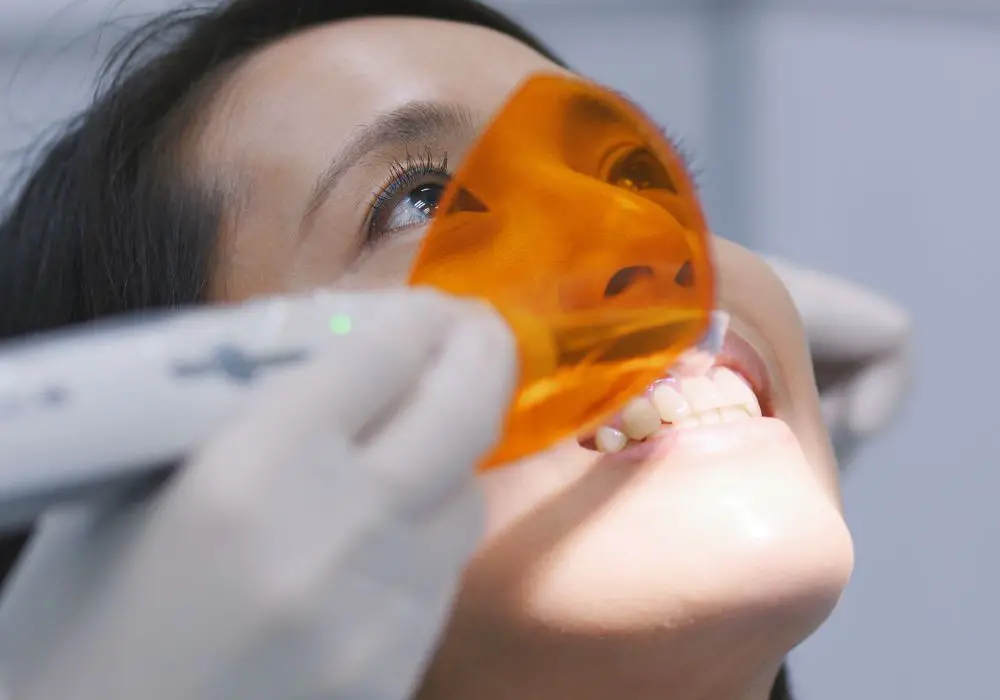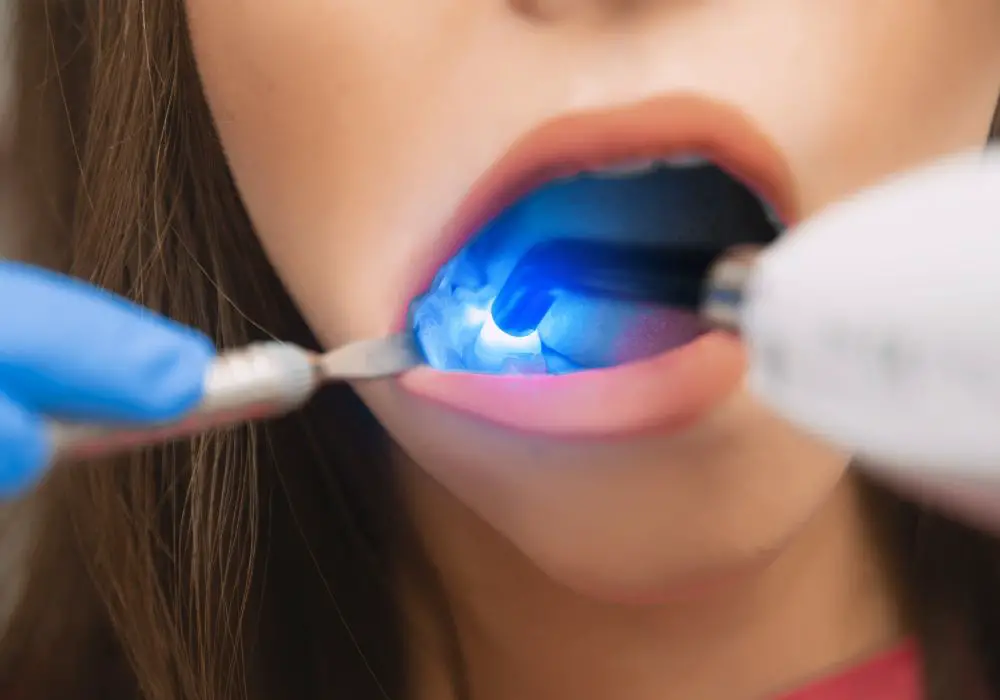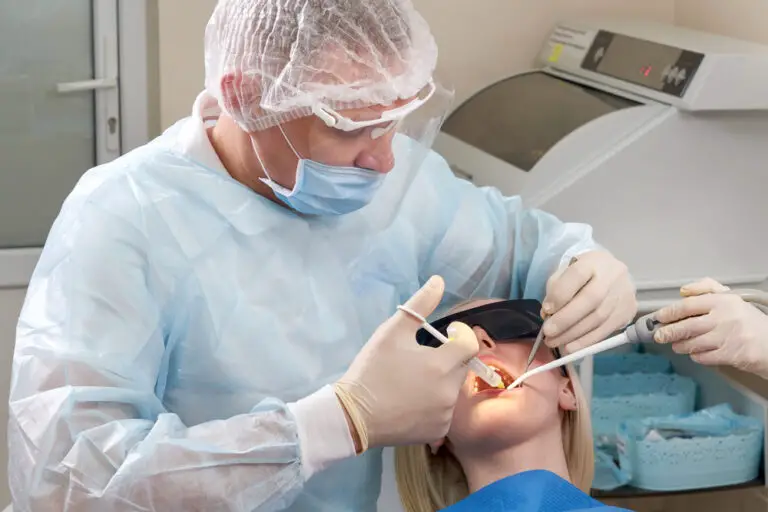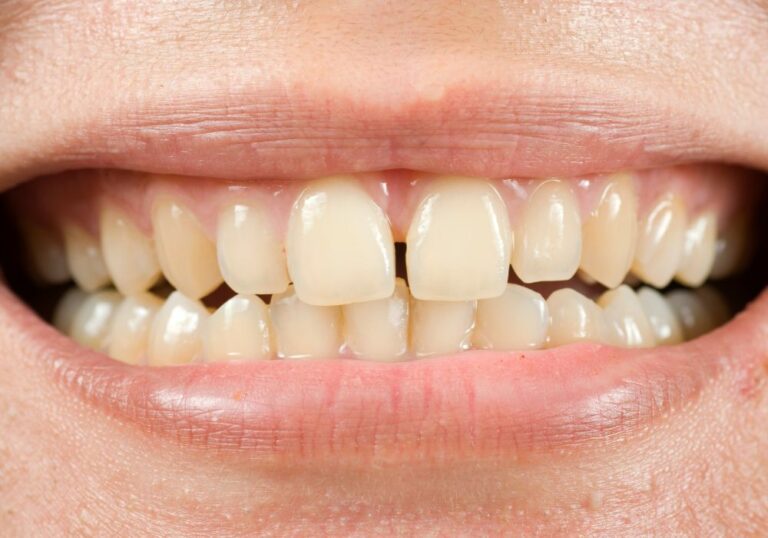Your teeth endure a lot over your lifetime. The daily wear and tear of biting and chewing can gradually damage your teeth. It’s common for bottom teeth to show this kind of wear and need repair. Fortunately, dentists can “build up” worn lower teeth to restore their shape, function and natural appearance.
What Does It Mean to Build Up Teeth?
Over time, your teeth may become shorter, thinner and more transparent from ongoing use. The edges can start to chip and crack. Old fillings might show signs of deterioration. All this damage causes your bite to feel off and allows new problems like tooth sensitivity and decay.
Tooth building restores worn teeth using dental bonding materials. Your dentist applies this material in layers to fill in gaps or rebuild thinning edges. Artistic layering recreates the original contour and fullness of damaged teeth. Built up teeth should blend right in for a seamless, natural smile.
Some common reasons teeth need building up include:
- Tooth wear from acidic food, abrasive chewing habits, grinding, etc. This erodes away at the enamel over many years.
- Untreated cavities that have caused large holes in teeth, compromising the edges.
- Cracks/fractures from trauma, hard biting, orthodontics, etc.
- Weak spots around old fillings that have deteriorated over decades of use.
With the right technique, tooth-colored bonding material makes damaged teeth strong and new again. It adheres firmly to rebuild weakened biting surfaces and edges prone to fractures.
Why Focus on Restoring Lower Teeth?
Your bottom teeth tend to require more extensive building up and repairs than upper teeth. Here are some reasons why:
More Forceful Chewing on Lower Jaw
The muscles involved in chewing and biting put greater force on the lower set of teeth. This constant, intense pressure wears down lower teeth much faster. Upper teeth stay protected behind the lower front teeth during most biting and chewing. They experience less direct impact from chewing forces.
Exposed Position in Mouth
Bottom teeth sit more exposed in the mouth rather than protected behind the upper teeth. This means lower teeth don’t benefit as much from the strengthening and neutralizing effects of saliva. Saliva helps to remineralize and harden tooth enamel after acidic food and drink. But lower teeth are located farther from the salivary glands.
Vulnerable Lower Teeth Types
The four lower front teeth are incisors with relatively narrow biting edges and long roots. Their position and shape makes them prime targets for chipping, cracking, and wearing down over decades of use. Lower canines and premolars also take a heavy beating.
Considering these factors, it’s common for lower teeth to require restoration as they deteriorate with age. Otherwise, continuing damage leaves teeth weak and prone to major repairs later on.
Signs You May Need Lower Tooth Repairs

Watch for these common indicators that your worn bottom teeth could benefit from building up:
- Your bite feels “off” or uncomfortable
- Tooth edges appear transparent or thinner
- Your teeth look visibly shorter, smaller or uneven
- You notice cracks, chips, gaps or notches along the edges
- Food catches easily in new gaps between teeth
- Teeth are hypersensitive to hot, cold or biting pressure
- You struggle to chew or bite into certain hard or crunchy foods
Don’t delay until you have severe breakdown or dental pain. Minor thinning and transparency that has not yet expose the underlying dentin layer can often still be restored. Taking action quickly prevents more complex repairs later on. Monitoring wear at regular dental cleanings helps catch issues early.
Step-By-Step Process for Building Up Teeth
Building up and restoring damaged teeth takes skill, experience and the right materials. Here is what’s involved in the tooth restoration process:
Step 1: Initial Exam
Your dentist will begin with a thorough exam, looking closely at the wear patterns of your teeth. They identify any underlying structural issues or decay needing treatment beforehand. X-rays provide important insights on the internal tooth anatomy. All this data guides planning the precise reshaping and build-up.
Step 2: Local Anesthetic
The area around the tooth will be numbed using local anesthesia like Novocain. This keeps you comfortable during the preparation and restoration steps.
Step 3: Tooth Preparation
Your dentist may gently remove a bit more of the damaged enamel with a dental drill. This preps the surface for optimal bonding. Small grooves are often etched for the material to grip into. The goal is to rebuild the ideal original shape and function.
Step 4: Applying Bonding Agent
An etching solution is brushed on first to microscopically roughen the surface. This allows the new material to adhere tightly. Next a bonding agent is used to chemically assist with bonding the new material to the natural tooth structure.
Step 5: Layering Composite Resin
The dentist selects composite resin in a shade to match your surrounding teeth. This putty-like material is meticulously placed in thin layers and shaped to rebuild lost tooth structure. A curing light hardens each layer. More layers build out the form to mimic natural contours.
Step 6: Finishing and Polishing
The tooth restoration is carefully trimmed, sculpted and smoothed. Your dentist uses fine polishing tools and abrasives to make resin restorations glossy. This mimics lifelike light reflection.
Step 7: Evaluating Your Bite
The dentist will have you bite down so they can check the height, shape and contact with the opposing tooth. Minor adjustments ensure the tooth meets properly and your bite feels comfortable and natural.
With the tooth rebuilt, you can now chew, bite and smile confidently again! It takes artistic skill to achieve natural looking, seamlessly blended restorations.
Benefits of Building Up Worn Teeth

There are many advantages to conserving your natural teeth structure through direct composite resin restorations:
- Restores strength against fractures – Bonded materials reinforce weak spots prone to chipping or cracking.
- Protects enamel – Coverage of thinning edges with resin prevents further breakdown and sensitivity.
- Corrects bite issues – Expertly contoured repairs can fix bite alignment problems.
- Relieves sensitivity – New bonded material prevents hot/cold sensitivity by insulating exposed dentin.
- Prevents decay – Rebuilding defects and gaps removes food traps that cause cavities.
- Repairs appearance – Subtly reshaped, built-up teeth look more even, balanced and youthful.
- Avoids major repairs – Direct resin bonding techniques often prevent the need for crowns or veneers.
- Conserves tooth structure – Bonding is far less invasive than other restoration options.
In many cases, building up teeth with dental bonding allows them to be preserved and restored for many years before more involved treatment becomes necessary.
Material Options for Tooth Building
Composite resin is the most common and ideal material dentists use to add structure to worn or damaged teeth. However, other options exist in certain situations.
Composite Resin
Tooth-colored composite resin is the least invasive option and bonds tightly to natural tooth structure. It can be matched exactly to surrounding tooth shades. Composite is kind to opposing teeth during chewing yet provides durable and stain-resistant repairs. Direct resin restorations tend to cost much less than other options.
Porcelain Veneers
Veneers are thin porcelain facings made in a lab that adhere over front teeth. Although more expensive, veneers can rebuild and improve color and alignment in one step. The porcelain is very strong, stable, and creates an ultra-white smile. Veneers may be chosen for more significant wear or crooked teeth.
Dental Crowns
Crowns are tooth-shaped caps that surround the entire visible portion of a tooth. While very strong, removing healthy tooth structure to place a crown should be avoided when possible. Crowns may become necessary for extensive damage, cracks extending below the gum line or following root canal treatment.
Caring for Your Built-Up Teeth
With excellent daily care, built-up teeth can last many years before needing refreshed. Be sure to:
- Maintain careful oral hygiene with twice daily brushing and daily flossing to prevent decay around restorations.
- Use a soft or extra soft bristle toothbrush and avoid highly abrasive toothpastes.
- Wear a custom nightguard if you grind your teeth to prevent damaging restorations.
- Avoid using teeth to open packages, crack hard nuts or chew on very hard foods.
- See your dentist promptly if you notice any new cracks, chipping or loosening of bonded restorations.
With a combination of professional dental care and diligent oral hygiene, you can keep your restored, built-up teeth functional and looking their best!
FAQs – Common Questions About Building Up Bottom Teeth
Here are answers to some frequently asked questions about restoring worn lower teeth:
Does getting teeth built up hurt?
Having bonding material applied to build up and reshape teeth is a painless process thanks to local anesthetic. There may be some minor sensitivity as the numbness wears off afterwards, but this is temporary. Over-the-counter pain pills can relieve any mild discomfort.
Are built-up teeth weak?
Not at all. Today’s dental bonding materials like composite resin are extremely tough and durable. They gain compressive strength once fully cured and bonded with the natural tooth. Properly contoured restorations won’t lead to fractures or damage as long as the bonded area stays intact.
Can I eat normally after teeth are built up?
Yes, normal chewing and biting are fine once teeth are properly restored. However, avoid using treated teeth to bite into extremely hard foods or open packaging. Use good judgment to avoid cracking the bonding material.
Do built-up teeth stain?
Composite resin is tooth-colored and blends in seamlessly when matched to your surrounding tooth shade. However, resin material is semi-porous and can collect staining over time from food and drinks like coffee, tea and red wine. Avoiding heavily pigmented foods helps built-up teeth stay stain-free.
How long do built-up teeth last?
With excellent home care and avoiding further damage, a composite resin restoration typically lasts 5-10 years before needing refreshed. Back teeth restorations tend to outlast those on front teeth. Proper usage, your bite, and jaw forces also impact longevity. Regular dental exams allow your dentist to monitor and extend the life of tooth restorations.
Conclusion
Repairing worn, fractured or chipped teeth is very common, especially in the lower jaw which takes more abuse. While such damage appears worrisome, today’s tooth-colored bonding techniques allow dentists to naturally rebuild and strengthen teeth. Composite resin is an affordable, minimally invasive option that conserves tooth structure. With proper oral care and regular dental visits, built-up teeth can function normally for many years before more complex solutions become necessary.






